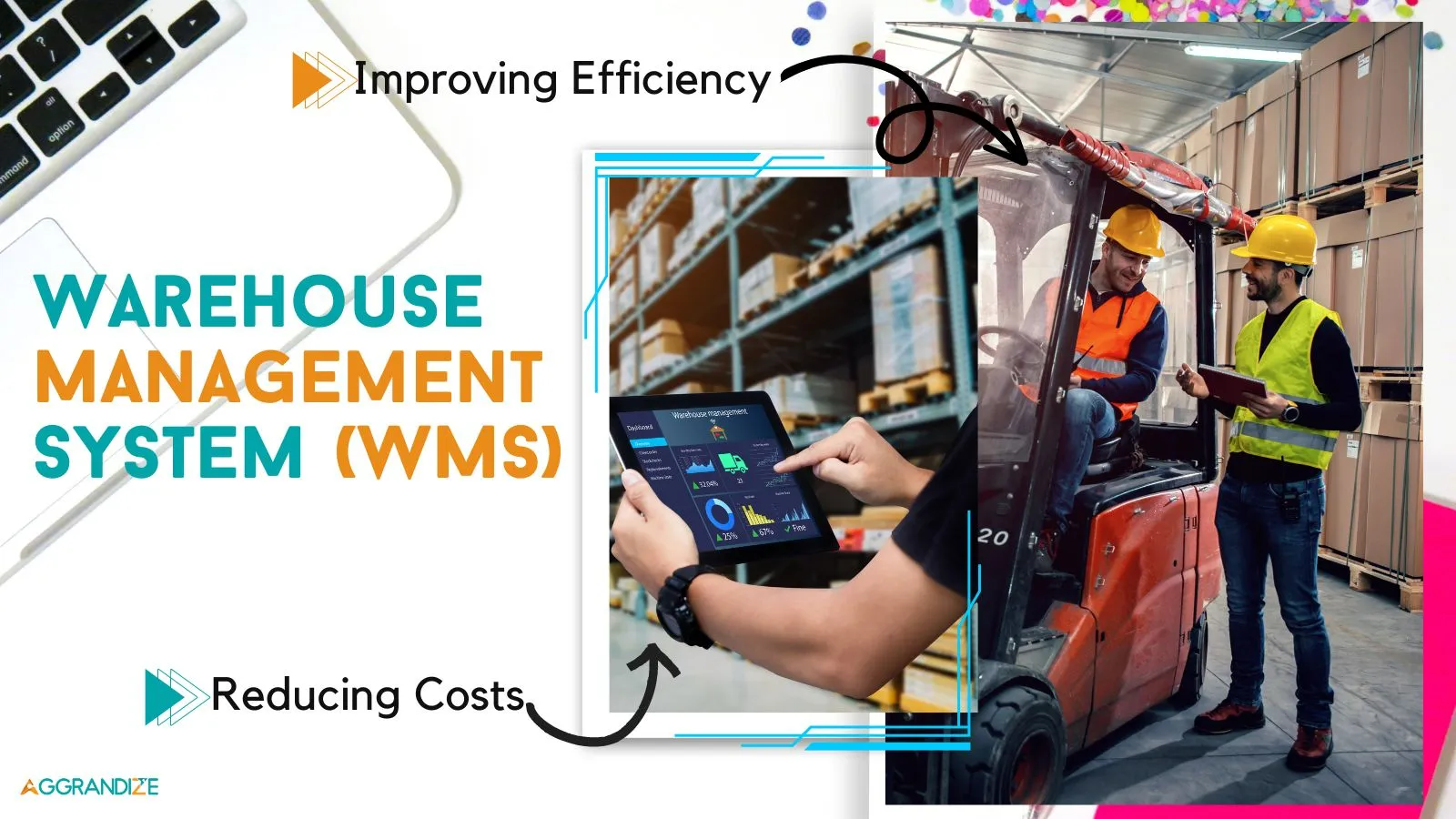Shipping ERP
Warehouse Management System - Improving Efficiency and Reducing Costs
Date: 19-04-2023
Warehouse management is an essential aspect of any business that deals with physical products or inventory. It involves the processes of receiving, storing, managing, and dispatching goods within a distribution centre. With the increasing demands of e-commerce and supply chain logistics, efficient management is more important than ever. One way to improve management is by using a WMS. In this blog, we will explore how WMS can help businesses improve their efficiency and reduce costs.
A WMSis a software application designed to support and optimize warehouse operations. WMS typically includes inventory, order fulfilment, receiving and put away, picking and packing, shipping and returns, and reporting and analytics. The system uses data and technology to automate and streamline warehouse processes, reduce errors, and improve overall efficiency. It can be integrated with other systems such as enterprise resource planning (ERP), Transportation management software, and customer relationship management systems.
 2.webp)
Benefits of using WMS
It can provide several benefits for businesses, including:
1. Improved Inventory Management:
It can provide real-time inventory tracking and visibility, enabling businesses to monitor their inventory levels and stock movements accurately. This can help prevent stockouts, overstocking, and other inventory-related issues that can impact sales and profitability.
2. Increased Efficiency and Productivity:
It can automate and streamline warehouse processes, reducing the time and effort required to perform manual tasks such as receiving, picking, and packing. This can help improve productivity and reduce labour costs.
3. Improved Order Fulfilment:
It can optimize order fulfilment processes, including order picking, packing, and shipping, ensuring that orders are fulfilled accurately and quickly. This can help improve customer satisfaction and reduce order processing time.
4. Better Data and Analytics:
It can provide real-time data and analytics on warehouse operations, including inventory levels, order processing times, and labour productivity. This can help businesses make better-informed decisions and optimize their warehouse operations.
5. Reduced Errors and Improved Accuracy:
It can help reduce errors and improve accuracy in warehouse operations by using automation and technology to eliminate manual data entry and minimize human errors.
6. Cost Savings:
It can help businesses save costs by improving warehouse efficiency, reducing labour costs, and minimizing inventory-related costs such as stockouts and overstocking.
Implementing a WMS
Implementing a WMS can be a significant investment for businesses, but the benefits can outweigh the costs over time. To implement it successfully, businesses should consider the following:
1. Define Goals and Objectives:
Before implementing a WMS, businesses should define their goals and objectives for the system. This includes identifying the key processes to be improved, the expected benefits, and the ROI.
2. Evaluate the Business Requirements:
Businesses should evaluate their current processes, systems, and infrastructure to determine the requirements for the WMS. This includes assessing the inventory volumes, order volumes, layout, and other factors that may impact the system's design and implementation.
3. Select the Right WMS:
Businesses should research and evaluate different WMS options to determine the best fit for their requirements. Factors to consider include the system's functionality, scalability, ease of use, and integration capabilities.
4. Plan the Implementation:
Implementing it requires careful planning and coordination with different stakeholders, including IT, operations, and end-users. Businesses should develop a detailed implementation plan that includes timelines, resource allocation, testing, and training.

WMS can help you streamline your inventory management and increase operational efficiency. With the ability to track inventory levels in real-time, optimize storage locations, and automate inventory replenishment, can help reduce stock outs, minimize overstocking, and prevent the loss of valuable.
Additionally, it can provide greater visibility into your supply chain operations, enabling you to make more informed decisions based on real-time data. This can lead to improved accuracy in order fulfilment, reduced labour costs, and increased productivity, allowing you to better meet the demands of your customers and stay ahead of the competition.
Overall, investing in ZEALIT Warehouse Management System can provide your business with a more efficient and streamlined warehouse operation, enabling you to optimize your inventory management, reduce costs, and improve customer satisfaction.